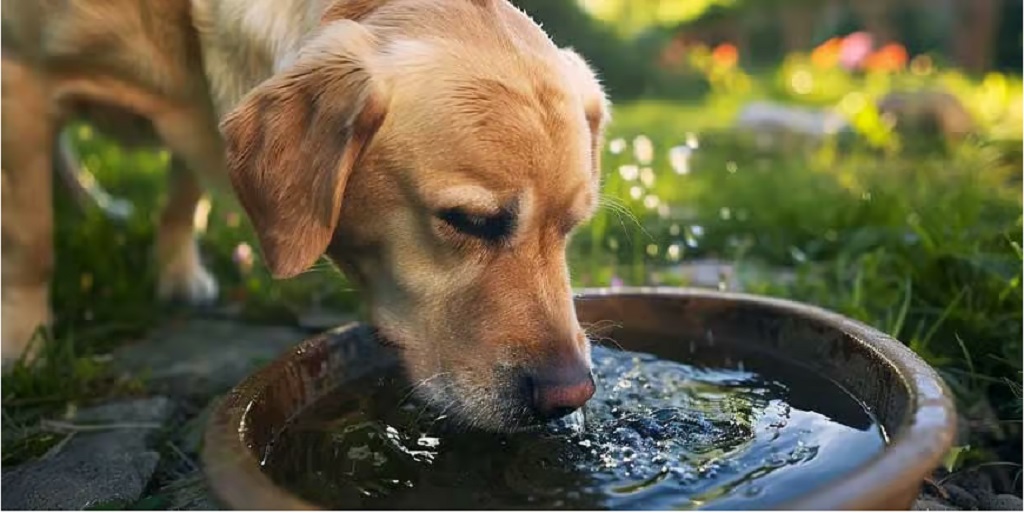Why Is Water the Key to Your Fur Baby’s Health? All About “Dog Water”
Have you ever wondered why dogs always need to drink water? How important is water to them, exactly? As a responsible pet owner, understanding your dog’s water needs is a fundamental part of keeping them healthy. Today, PetChill Pet Supplies will uncover all the secrets of “dog water” for you, helping your fur baby stay in top shape!
Water: The Most Critical Nutrient in a Dog’s Body
Water is the most essential nutrient in a dog’s body—even more important than food! A dog’s body is made up of approximately 73% water, and this water plays an irreplaceable role in their system.
The Vital Functions of Water in Dogs’ Bodies
1. Transport System for Nutrients and Waste
- Water acts like an internal delivery service for dogs, dissolving nutrients and carrying them to all parts of the body.
- It helps flush out toxins and waste, maintaining overall health.
2. Core Player in Chemical Reactions
- Participates in the breakdown of carbohydrates.
- Aids in the digestion of proteins.
- Supports the metabolism of fats.
3. Body Temperature Regulation
- When a dog pants, it’s actually using water to cool down.
- As water evaporates from their tongue and respiratory system, it carries away heat, helping regulate body temperature.
4. Joint Lubrication and Protection
- Water reduces joint friction, pain, and stiffness.
- This is especially important for senior dogs, as they are more prone to joint issues.
5. Organ Function Support
- Organs like the kidneys, liver, and heart require adequate water to function properly.
- Dehydration can lead to organ damage or even failure.
How Much Water Does a Dog Need Daily?
A dog’s water requirements vary based on their weight, age, activity level, and diet type. Below is a simple guide:
| Dog Weight | Daily Water Intake |
|---|---|
| 2 kg | 188 ml |
| 3 kg | 255 ml |
| 4 kg | 317 ml |
| 5 kg | 374 ml |
| 6 kg | 429 ml |
| 7 kg | 482 ml |
| 8 kg | 533 ml |
In general, dogs should consume about 50–70 ml of water per kilogram of body weight. If your dog eats mainly dry kibble, they will need extra water, as dry food has a low moisture content.
How to Tell If Your Dog Is Dehydrated?
Dehydration is extremely dangerous for dogs—catching it early could even save their life! Here are simple ways to check:
Quick Dehydration Checks
“Lethargic Dog” Signs
- A usually energetic dog suddenly becomes lazy and sleeps more than usual.
- Unusual tiredness can be a warning sign of dehydration.
“Skin Elasticity” Test
- Gently pinch the skin on your dog’s shoulders and release it.
- If the skin takes a long time to bounce back, your dog may be dehydrated.
Observe Urination
- Fewer trips to pee than usual, or dark yellow urine, can indicate dehydration.
- On the flip side, a sudden increase in urination may signal other health issues.
What Kind of Water Should Dogs Drink?
Choosing the right water for your dog is crucial, as different types of water affect their health differently.
Best Choice: Boiled Tap Water
Boiled tap water is the best option for dogs—it provides essential minerals they need for growth. It’s recommended to replace the water in their bowl 1–2 times a day to ensure freshness.
Not Recommended Water Sources
- Unboiled tap water: Contains chlorine (used for disinfection), which affects taste; old pipelines may also introduce impurities.
- Mineral water: Long-term consumption may lead to excessive mineral intake, especially unsuitable for dogs with uremia or urinary stones.
- Purified water/distilled water: While clean, it lacks minerals and trace elements dogs need, so it’s not ideal for long-term use.
How to Encourage Your Dog to Drink More Water?
Some dogs may not be enthusiastic about drinking water. Here are three ways to boost their water intake:
1. Regularly Replace and Clean Water Bowls
- Water bowls left out for a long time can breed bacteria.
- Cleaning and refilling the bowl regularly encourages pets to drink more.
2. Add a Circulating Water Dispenser
- Circulating dispensers keep water fresh and flowing.
- This sparks pets’ interest and maintains water quality.
3. Add Water to Their Food
- Mix a small amount of water into canned food.
- Make nutrient-rich broths (e.g., okra, tofu, and pumpkin soup) to entice your dog to drink more.
Pet Water Dispensers: A Great Helper for Modern Pet Owners
With technological advancements, pet water dispensers have become a popular choice for many owners. Here are three key factors to consider when buying one:
1. Water Cleanliness
- Check if the dispenser has a filtration function.
- See if it can sterilize water to keep it clean.
2. Quiet Operation
- Dispensers usually run for long periods.
- A quiet design prevents disturbing your family and pet’s rest.
3. Smart Features
- Some high-end dispensers come with app connectivity.
- They can track your pet’s drinking habits, analyze health conditions, and send reminders to replace filters, clean the device, or add water.
Conclusion
Water is the cornerstone of your dog’s health. Adequate water intake affects everything from digestion to temperature regulation. As a responsible pet owner, ensuring your fur baby has access to enough clean water is one of the most basic yet important responsibilities.
If you need to adjust the tone (e.g., more casual or more professional) for your blog audience, or want to add a glossary of pet-related terms for English readers, let me know—I can refine it further.

